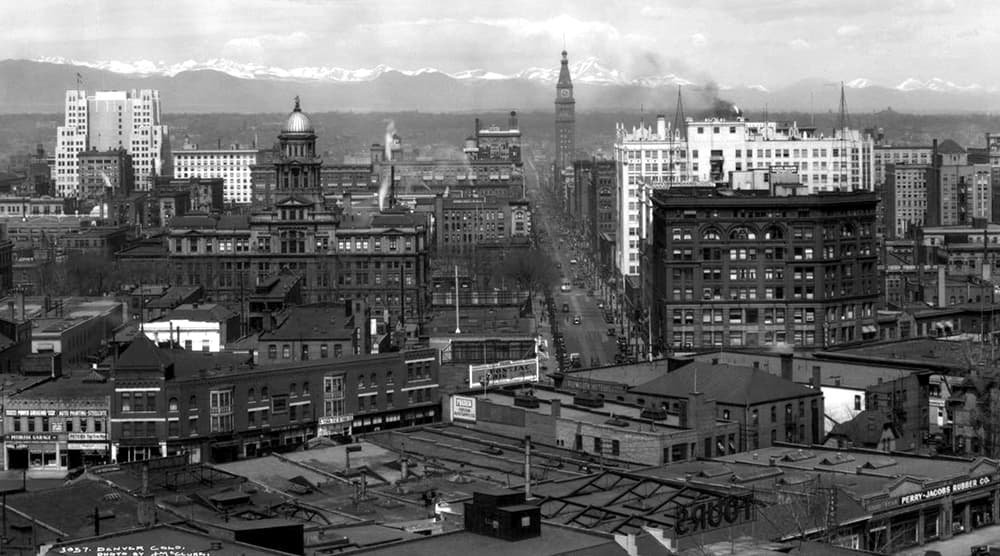
The oldest buildings in Denver preserve the stories of the people who molded Denver into what it is today, said Annie Levinsky, executive director of Historic Denver Inc.
Saved buildings from the second half of the 19th Century include a three-story structure owned by an escaped slave who helped shape Colorado politics and a church turned synagogue turned art gallery. We look at 15 of the oldest buildings in Denver for the Chart of the Week.
Historic Denver Inc. compiled the below list of buildings using assessor's records and other historic documents. Because records are incomplete or differ in information, it's very difficult to make a definitive ranking of the oldest buildings, Levinsky said. If you feel we've left something off, email us at [email protected].
Only one of the buildings on the list is preserved as a museum. That's not necessarily a bad thing, according to Historic Denver.
"There are certainly buildings that are worthy of being museums. We own one — The Molly Brown House — and we are very proud of it and love it," Levinsky said. "Preservationists want buildings to be reused. Just keeping them for the sake of having four walls is not particularly viable. It’s not good for the buildings, and it's not good for the communities."
"We don’t just save them to freeze them in amber and keep them around for no purpose," she added. "There’s been a lot of studies and documentation that shows historic buildings help make cities healthier economically and socially."
15 of the oldest buildings in Denver and why they matter
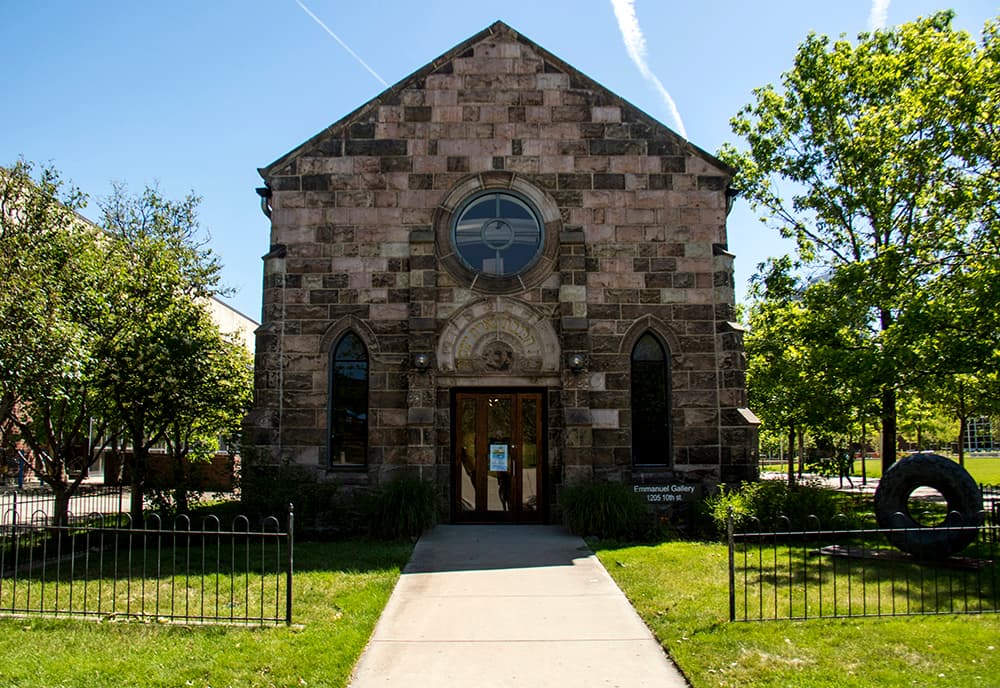
Emmanual Shearith Israel Chapel — 1876
The Emmanuel Shearith Israel Chapel at 1201 10th St. is Denver's oldest still standing church. The building on the site was originally an Episcopalian chapel but after the population in the area changed, it was converted to a Jewish synagogue.
"Due to a diminishing membership, regular services ceased at Emmanuel Shearith in 1958. In 1963, the church was converted into an artist's studio by the owner, Wolfgang Pogzeba," according to its National Register of Historic Places form from 1969. Today, the building on the Auraria campus is used for a nonprofit art gallery.

Bosler House — 1875
Ambrose Bosler was a north Denver pioneer, active in the Union Ice Co. and other local businesses. His blood likely would have gone cold in recent years after his house became a "neglected and derelict" building. In 2008, the previous owner of the home without permission removed the roof. The conflict between the owner and city left the home open and exposed for several years until the city foreclosed on the property and a court-appointed receiver finalized its sale in March 2016 to a couple that planned to restore it.
The Bosler House at 3209 W. Fairview Place was included in the national historic designation of The Tilden School for Teaching Health campus in 1995.
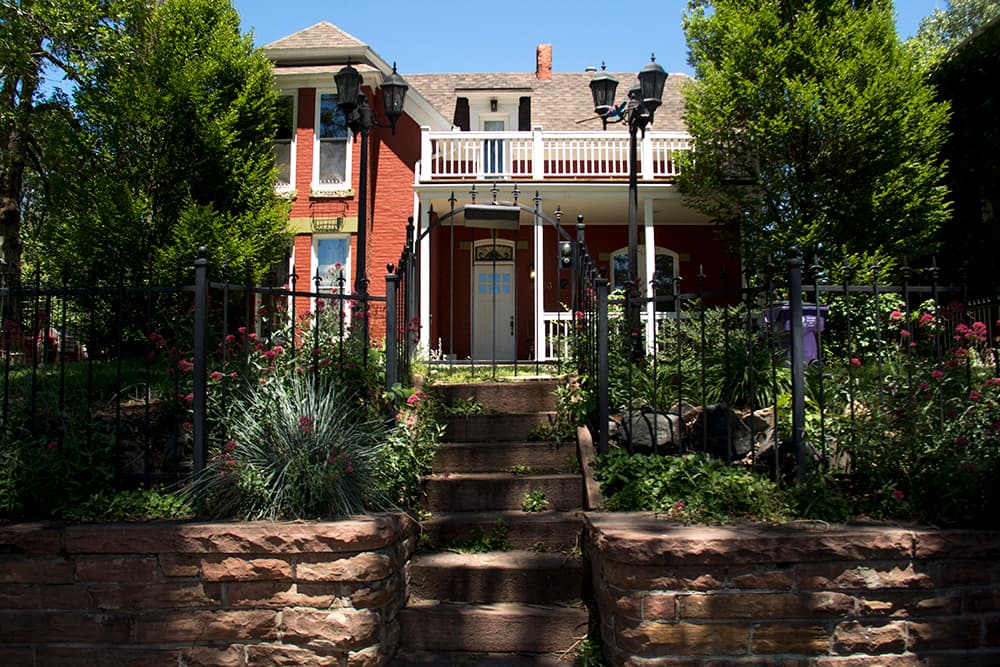
Henri Foster House — 1874
Henri Foster helped establish the town of Highland before it was later folded into the city of Denver in the late 19th Century. Foster was a real estate man who helped lay out the original streets in addition to serving as Highland's first town clerk. His home at 2533 W. 32nd Ave. is believed to be the oldest in the Potter-Highlands Historic District. The building was included in the district's national historic place designation in 1986. It was last sold in 2002 for $330,000.
The address of this building was previously misidentified in an earlier version of this article as was its last sale date and price.
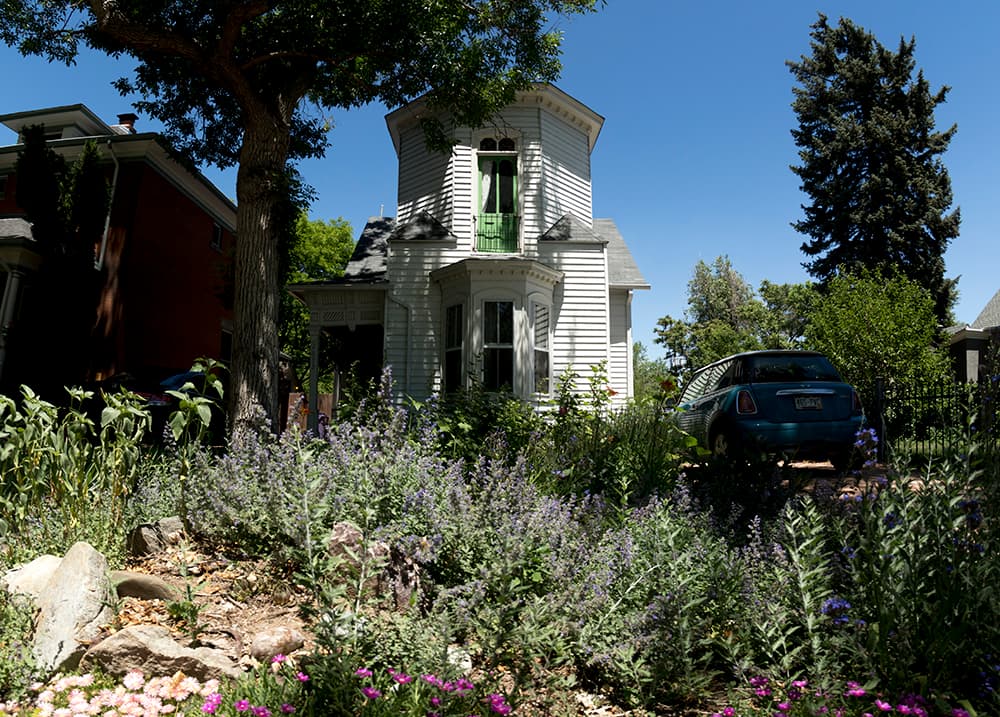
Patrick McGowan House — 1874
Patrick McGowan is another person who helped form Highland as a town before it was later folded into the city of Denver in the late 19th Century. His home at 2633 W. 37th Ave. is one of "Denver's best examples of 19th Century vernacular wood frame structures" that focused more on functionality than being monumental. The building was included in Potter-Highlands Historic District's national historic place designation in 1986. It was last sold in 2009 for $340,000.
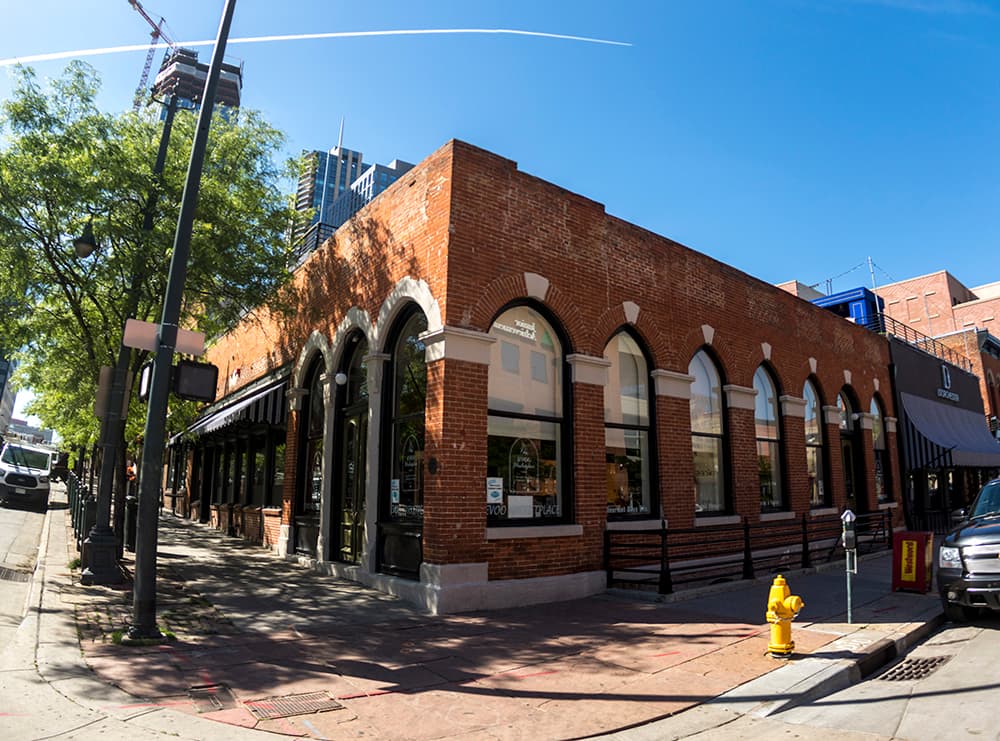
Wells Fargo Building — 1874
"This pioneer stagecoach office is a reminder that Denver became the territory's transportation hub even before the arrival of railroads," according to "Denver Landmarks and Historic Districts" by Thomas J. Noel.
The Wells Fargo Building at 1338 15th St. is "perhaps the most important" building from the 1870s era, according to an application filed for historic designation.
"The city's first commercial building to employ Gothic arches, it represented a radical departure from the 1860s concept of commercial style which dictated the use of the rounded arch," the application states. "Although the upper two stories of the building were destroyed by a fire in the 1940s, the Wells Fargo Building still retains sufficient integrity to qualify as a contributing resource to the district."
Today, the building houses the olive oil & aged balsamic supplier EVOO Marketplace. It was last purchased in 2012 for $565,000.
Kettle Building — 1873
Butcher George Kettle bought an empty lot at 1428 Larimer St. and used his neighbor's walls to build his namesake building, the Kettle Arcade, in 1873, according to the University of Northern Colorado. "Not long after it was built, Mr. Kettle left his building. Kettle himself went into the real estate business. After Kettle left it, the building housed many different businesses. At various times it served as the home for an employment agency, a knick-knack store, a newspaper office and a steam dye works."
Now the open archway at the bottom of the building called the Kettle Arcade leads to a courtyard home to Green Russell, Russell’s Smokehouse, Wednesday’s Pie, Bistro Vendome and Milk & Honey, according to Larimer Associates. It was last purchased in 1993 for $9.4 million and was later transferred, in part, to Larimer Associates. The building was included in Larimer Squares' national historic place designation in 1973.
Due to a source error, the address of this building was previously misidentified in an earlier version of this article as were its current tenants.
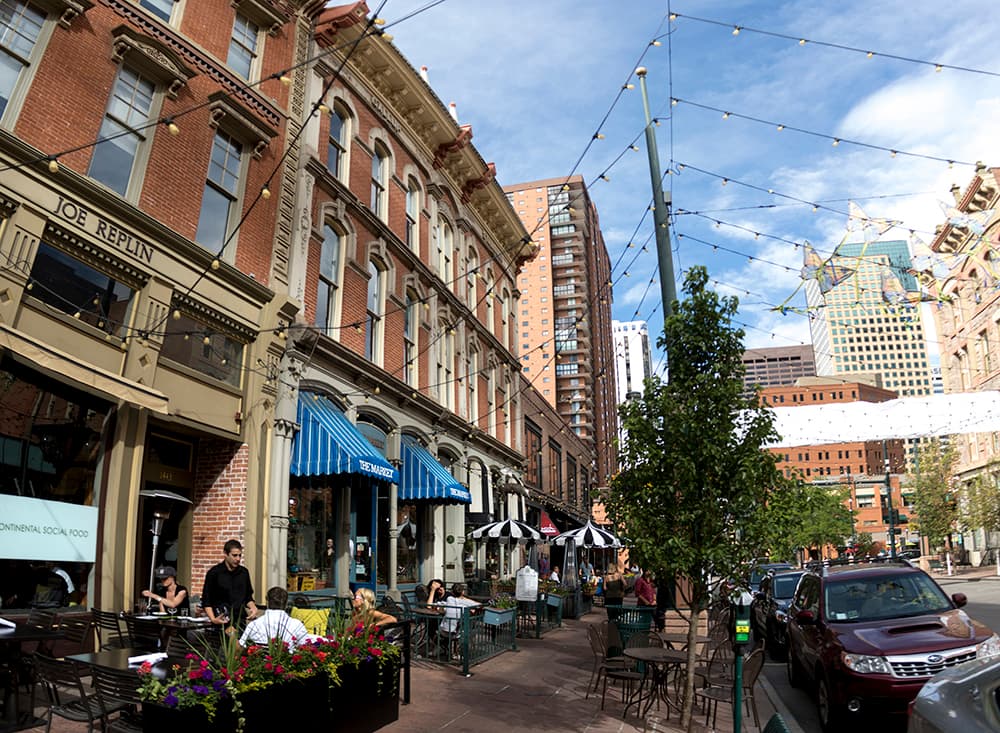
Gallup-Stanbury Building — 1873
The Gallup-Stanbury Building at 1445 Larimer St. is one of the oldest buildings left in Larimer Square. The site was originally used by the Denver Meat Market. Later, political aspirant Andrew Stanbury ran the early, seamy saloon the Tabien there, according to the University of Northern Colorado. In 1873, Stanbury and merchant Avery Gallup tore down the building and replaced it with the three-story, brick structure that's there today. Today the building is used by The Market deli and Italian restaurant Osteria Marco. The buildings at 1443 and 1445 Larimer Streets were purchased in the 1990s for $10.7 million and later transferred to Larimer Associates. The building was included in Larimer Squares national historic place designation in 1973.
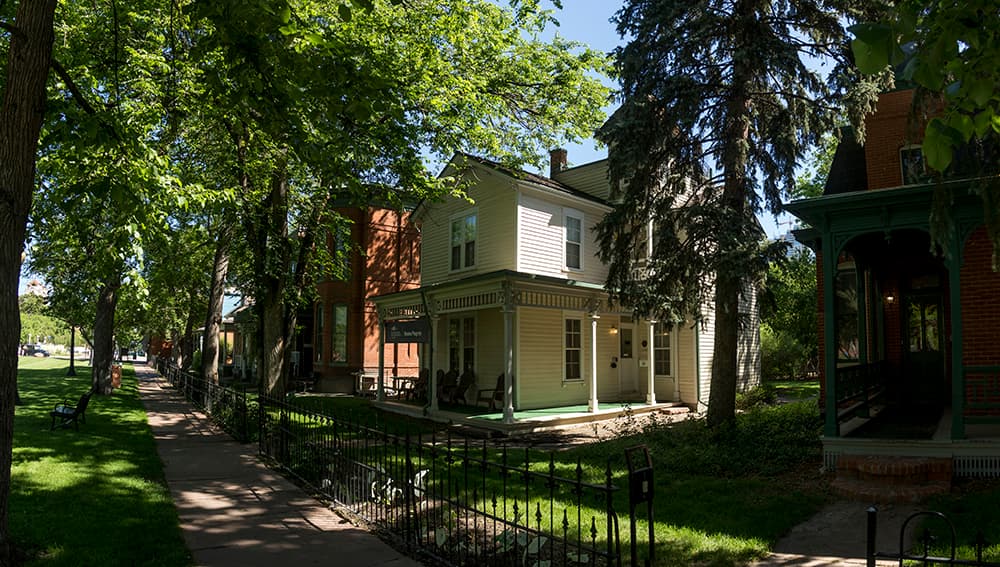
Auraria Ninth St. House Historic District — 1873
The historic Ninth Street of Denver, between Curtis and Champa streets, was established in the late 1800s and early 1900s, not long after the town of Auraria folded into Denver City. The block, originally called Cheyenne Street, is home to mainly Victorian homes that typify "a modest residential area spanning the years 1873 to 1905." It was entered into the National Register of Historic Places in 1973.
"Though not historically noted, the residents were typical of the pioneer stock that built the city, people like a flour mill owner, railroad engineer and telegrapher, cattle and horse dealer, dentist, blacksmith, coppersmith, tinner, cabinet maker, ice dealer, livery owner, and bookkeeper for the Tivoli Brewery, who all lived in this block between 1873 and 1905," according to an application filed for historic designation.
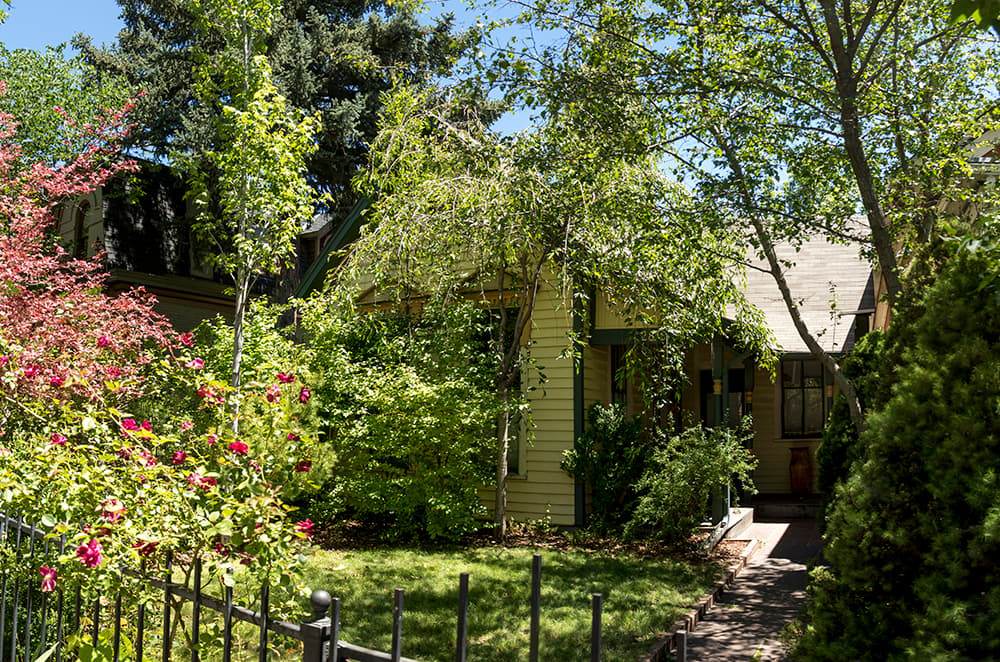
Crowell House — 1872
The David Crowell House is a small clapboard cottage at 2816 Curtis St. It's thought to be the oldest home in the Curtis Park neighborhood and a rare, wooden structure in the area.
"As the city of Denver had passed laws requiring masonry reconstruction of all buildings following city-wide fires in the 1860s, this building was extremely rare even at that time," according to Congleton Architect. The founder of the California-based firm, Brian Congleton, purchased and preserved the home in the 1970s. The home was last sold for $40,000 in 1997.
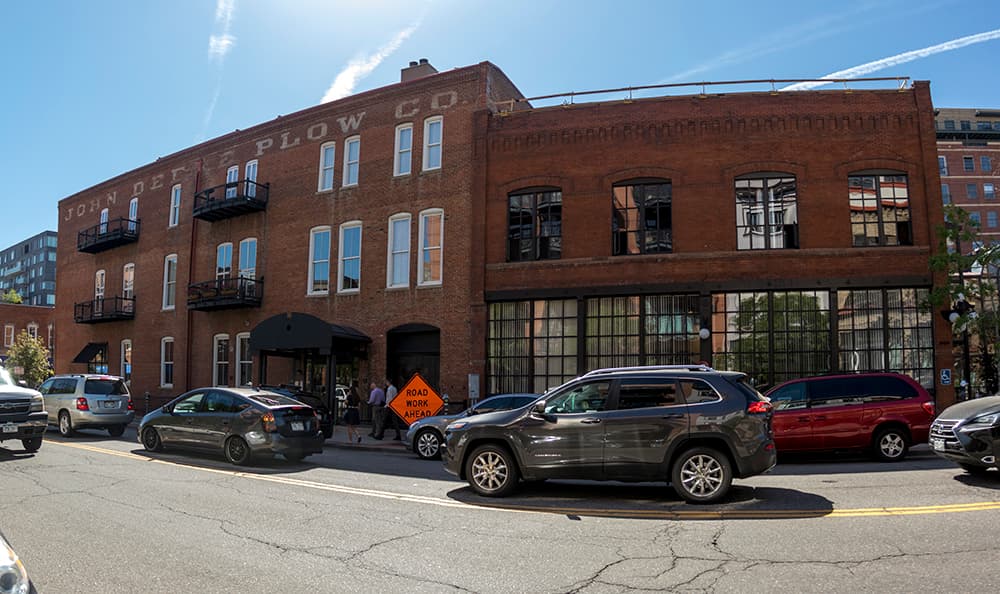
John Deere Plow Co. Building — 1871
Back when farmers plowed fields in Denver, they'd stop in the John Deere Plow Co. building at 1488 Wazee St. for horse-drawn carriages and farm equipment. The three-story building was remodeled in the 1990s by Oz Architects to house 10 condos and the Denver office of the architecture firm Page.
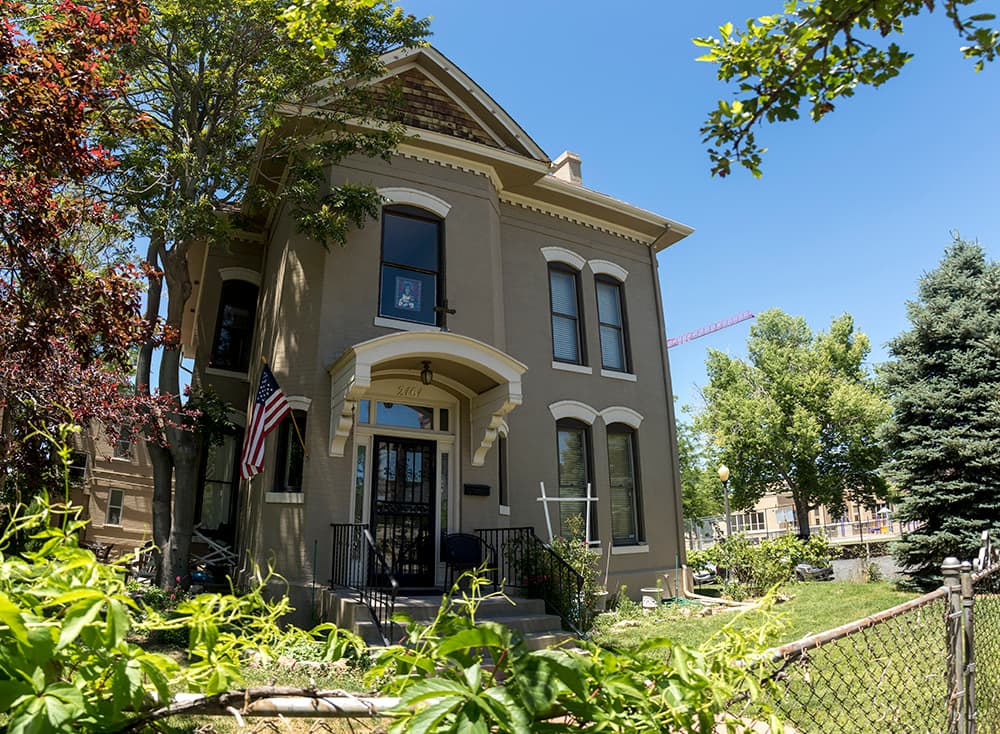
Hall House — 1871
The Denver rep of the Singer Manufacturing Co., Lucious E. Hall, built and lived in the house at 2161 Tremont Place in the 1870s. Hall was the first to build a home on the 2100 block of Tremont Place in what is now known as the Clements Historic District. The building is also significant due to its Italianate style architecture, popular around the Civil War. Today, the Hall House is owned by the Roman Catholic Archdiocese of Denver.
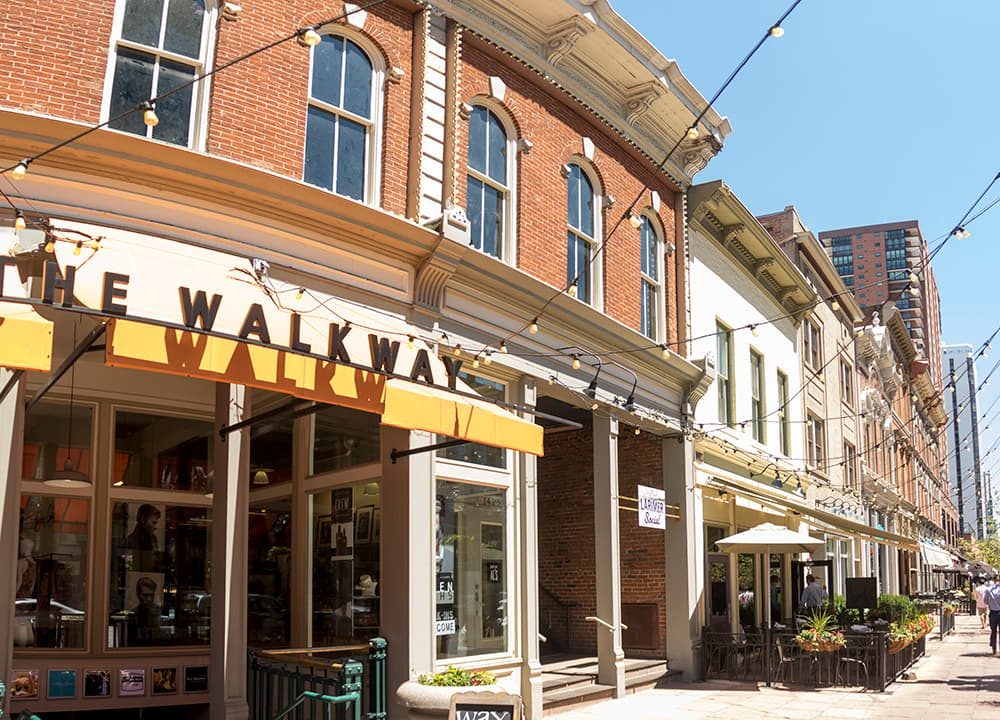
Congdon Building — 1870
The Congdon Building at 1425 Larimer St. replaced the spot where politicians met back when Colorado was still the Jefferson Territory, according to the University of Northern Colorado. The previous Apollo Hall on the site was Denver's first theater, according to Larimer Associates. The building was included in Larimer Squares' national historic place designation in 1973.
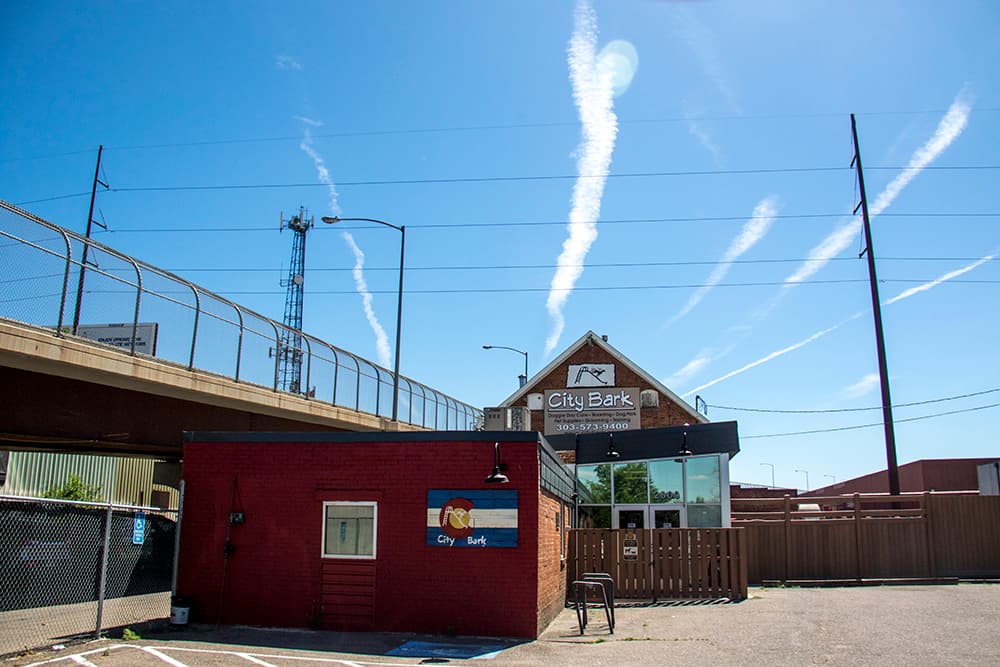
Denver Woolen Mill — 1870
The former home of Denver Woolen Mills has gone to the dogs. The Denver-based doggie daycare City Bark purchased the building at 2000 W. Eighth Ave. in 2007 for $850,000. Few details can be gleaned about the two-story building except that in the 19th Century it was owned by J.W. Smith, a key figure in today's La Alma-Lincoln Park neighborhood. In 1887, a trade journal published, "Colorado is a wool-producing state, and its inhabitants 'use more woolen goods per capita than in any other state in the Union.' Singularly enough there is not one woolen mill there. These points are made in the Denver Chamber of Commerce report. It is thought that if a wool warehouse and facilities for handling in that state and for scouring wool be established there, the manufacture of woolen goods would quickly follow."
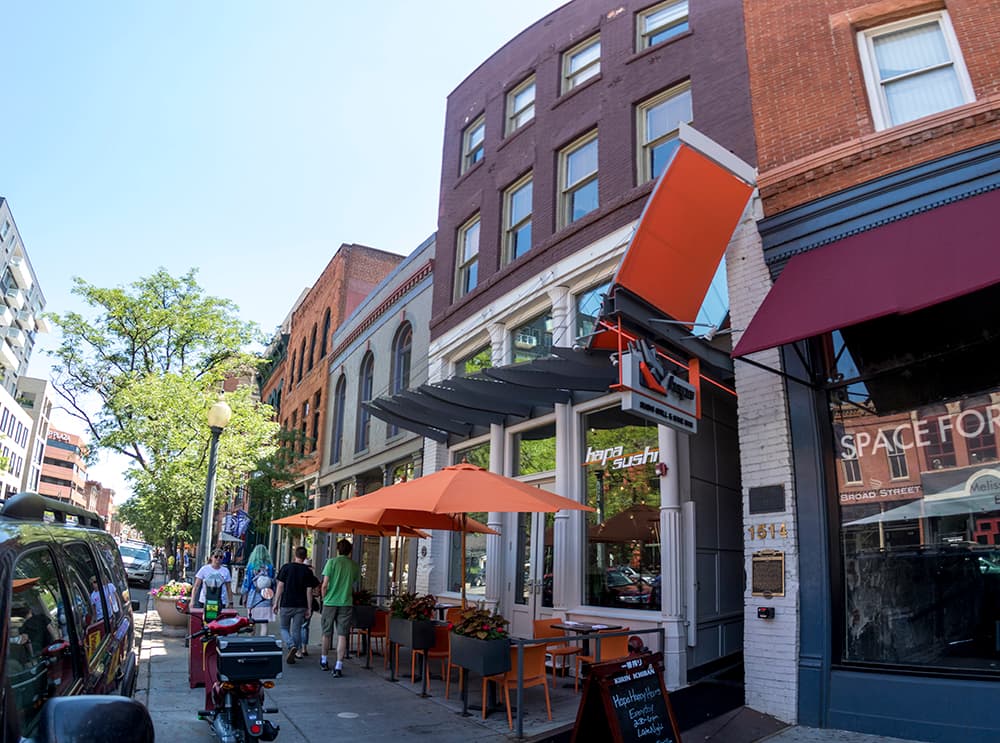
Barney L. Ford Building — 1863
Barney L. Ford is the kind of man movies are made about: a successful Colorado businessman who was born a slave in Virginia. He's honored at the Colorado State Capitol with a beautiful stained glass portrait. The property at 1514 Blake St. is one of the few buildings left in Denver associated with this pivotal black leader.
In 1862, Ford rented the building at 1514 Blake St. After the original building burned down the next year, Ford borrowed $9,000 and built a two-story structure on the site in 1863. A restaurant and bar were located on the first and second floors of the building, a barber shop and hair salon in the basement. In 1892, a third story was added to the building. Today, the building is used by Hapa Sushi. It was purchased by a Boulder-based development group in 2012 for $2.1 million.
The Barney L. Ford Building was entered into the National Register of Historic Places in 1976.
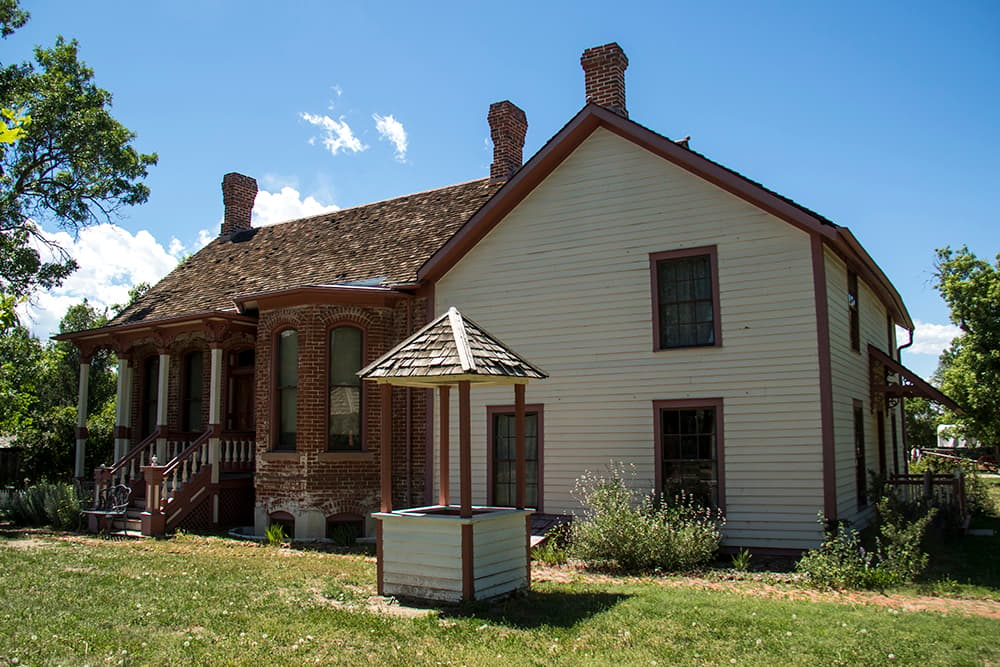
Four Mile House — 1859
The Four Mile House in the Four Mile Historic Park was one of the last stops along the Wells Fargo Butterfield Stage line trail from El Paso, Texas to Denver in the second half of the 19th Century. The two-story house at 715 S. Forest St. is now a museum that's owned by the City and County of Denver and surrounded by the community of Glendale. The Four Mile House was entered into the National Register of Historic Places in 1969.
Business & data reporter Adrian D. Garcia can be reached via email at [email protected] or twitter.com/adriandgarcia.
Subscribe to Denverite’s newsletter here.













